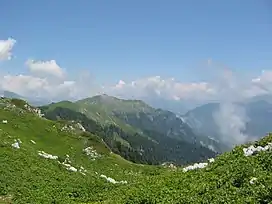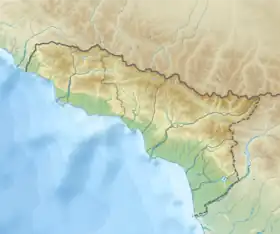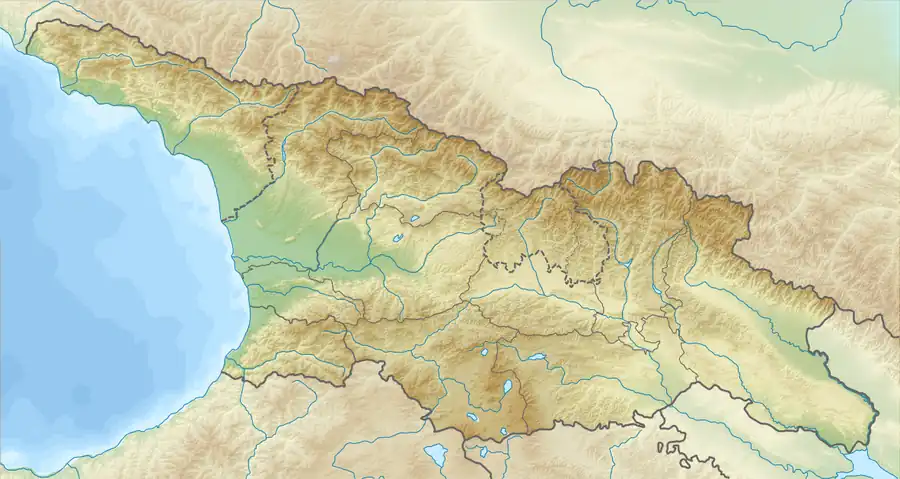Gagra Range
Gagra Range (/ˈɡæɡrə, ˈɡɑː-/; Georgian: გაგრის ქედი, romanized: gagris kedi; Russian: Гагрский хребет, romanized: Gagrskij hrebet) is a mountain range of the Greater Caucasus in Abkhazia[note 1], Georgia.The range runs between the valleys of the Bzyb and Psou rivers to the south of the Caucasus Major, in a general North-South direction. The highest elevation is 3,357 m (Mount Agepsta).
| Gagra Range | |
|---|---|
 View of Gagra mountains. | |
| Highest point | |
| Peak | Mount Agepsta |
| Elevation | 3,357 m (11,014 ft) |
| Dimensions | |
| Length | 85 km (53 mi) |
| Geography | |
  | |
| Country | Georgia |
| Region | Abkhazia[note 1] |
| Range coordinates | 43°29′54″N 40°12′50″E |
| Parent range | Caucasus Mountains |
The Gagra Range approaches the Black Sea close to the city of Gagra and plays an important role in moderating the climate of that resort by blocking cold, continental winds from the north and east.
The range is mostly made up of limestone, with pronounced karst topography and is characterized by many deep canyons created by rivers. The deepest cave in the world, the Veryovkina Cave, is located in the Arabika Massif of the Gagra Range.
A highway to Lake Ritsa runs by the range, along the Bzyb, Iupshara and Gega rivers.
See also
Notes
- The political status of Abkhazia is disputed. Having unilaterally declared independence from Georgia in 1992, Abkhazia is formally recognised as an independent state by 5 UN member states (two other states previously recognised it but then withdrew their recognition), while the remainder of the international community recognizes it as as de jure Georgian territory. Georgia continues to claim the area as its own territory, designating it as Russian-occupied territory.